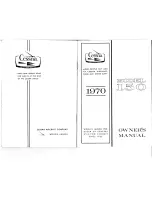
PREPARATION
EN
07
06
Total Weight in flight
Each size has been CCC certified with a defined maximum weight and a recommended minimum weight.
We strongly recommend that you respect these weight ranges. If you want better speed, precise handling,
and generally fly in mountains and/or in strong conditions, you should chose to fly in the middle to top
part of the weight range. If you want a better sink rate, or if you generally fly in flat lands and/or in weak
conditions, you should choose to fly nearer the middle part of the weight range. Remember, you can
always add ballast when conditions are stronger.
For competition flying it is generally better to be in the upper part of the weight range.
Limitations
The Enzo 3 has been designed as a high performance solo XC/competition wing and is for experienced
world class pilots only. It is not suitable for beginner or intermediate pilots, aerobatics, training or tandem
flights. The Enzo 3 has the potential to for aggressive behaviour in demanding situations, to be flown safely
it requires a very high level of piloting skills. Pilots are expected to have an in-depth knowledge of SIV with
recent, direct experience of high aspect ratio wings. We also expect the pilot to have the necessary active
flying skills and quick reaction times to keep a high aspect ratio wing open in turbulent air.
The Enzo 3 was certified with the use of collapse lines and therefore collapses should not be induced
without them. We strongly recommend expert tuition over water with all the necessary safety precautions
in place. Ensure that you fully understand the correct and safe use of this equipment before attempting
SIV.
Towing
The Enzo 3 may be tow-launched. It is the pilot’s responsibility to use suitable harness attachments and
release mechanisms and to ensure that they are correctly trained on the equipment and system employed.
All tow pilots should be qualified to tow, use a qualified tow operator with proper, certified equipment,
and make sure all towing regulations are observed. When towing you must be certain that the paraglider
is completely over your head before you start. In each case, the maximum tow force needs to correspond
to the all up weight of the pilot.
Accelerator System
To set up the accelerator system, first route the lines supplied with the speed system through the harness.
Make sure this is done correctly and that the lines pass through all of the pulleys (check your harness
manual for instructions). Attach the speed system lines to the accelerator system on the risers with the
Brummel hooks. A basic set-up can be performed on the ground: ask a friend to pull the risers tight into
their in-flight position whilst you sit in the harness on the ground. Now adjust the lengths of the lines so
that the main bar sits just beneath your seat. You should be able to hook your heel in to the lower loop of
the accelerator. There must be enough slack in the speed bar to ensure the front risers are not pulled down
in normal trim speed flight, but not so long that it is impossible to use the full speed range of the glider.
Once set up, test the full range of the accelerator in calm flying conditions and ensure that both risers are
pulled evenly during operation. Fine-tuning can be completed when you are back on the ground.
The blue tag on the riser speed system line indicates 10cm of travel, this is the speed at which the wing
has been certified. Only push beyond this position when the air is calm and it is safe to do so.
Harness
It is important to set up your harness correctly before flying the wing. Make sure to spend time adjusting
your harness’s different settings until you are completely comfortable. Each size has been flight tested in a
seated harness with a chest strap width of 45cm. The chest strap should be set between 44cm and 48cm
(between the centre of the hang points) according to your taste.
Reserve Parachute
We recommend that you fly your Enzo 3 with two reserve parachutes suitable for your maximum all up
flying weight. These parachutes should be accessible with both the left and right hands.
Wing
To prepare the wing, lay it out on the top surface and perform a thorough daily check. You should inspect
the top and bottom surfaces for any rips and tears or any other obvious signs of damage. Lay out the lines
one side at a time, hold up the risers and starting with the brake lines, pull all lines clear. Repeat with the
C (uppers), B and A lines, laying the checked lines on top of the previous set, and making sure no lines are
IMPORTANT
The blue tag on the
riser speed system
line indicates 10cm
of travel, this is
the speed at which
the wing has been
certified. Only push
beyond this position
when the air is calm
and it is safe to do so.
Содержание Enzo 3
Страница 1: ...Pilots Manual...
Страница 2: ......
Страница 23: ...1258 Route de Grasse Le Bar sur Loup 06620 France...




































